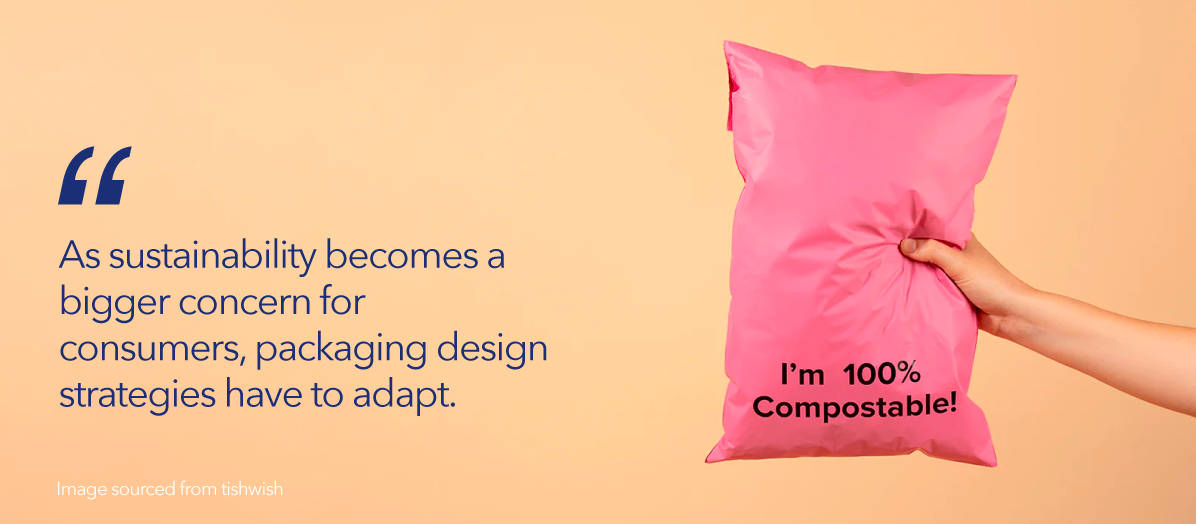How to nail your product packaging design
When it comes to product packaging, it’s all about making an impression. You want to create a design that will make your product stand out on the shelf while also communicating the product’s key features and benefits. This insight presents an overview of the critical areas you must focus on while designing your product packaging.
What is product packaging design?
Product packaging design does more than tell you what’s on the tin. It is a tangible, visual symbol representing the attributes of the product. For example, when you see Cadbury’s purple chocolate wrapper, your brain associates that colour with the creamy taste of chocolate. As we see customers becoming increasingly emotional in their purchasing decisions, greater importance is placed on a design that triggers emotional cues through layout, typography, and colour.

In a world where consumers are constantly inundated with advertising and marketing messages, product packaging is more important than ever for FMCG brands. It’s one of the few ways that brands can differentiate themselves from their competitors and the first point of contact that consumers have with a product.
Strategically written copy is another key element to promote brand awareness and attract potential customers. This means your product’s copy needs to match your brand tone of voice, reflect your brand values and signify your brand attributesand offerings. We recommend working with copywriters to create concise, impactful content for your product, to ensure you’re speaking the right language to the right audience.
What are the first steps in branding your own product?
The following steps guide you through the elements involved when it comes to branding your product.
Define your target audience. Just because you think your product is the bee’s knees, doesn’t mean your target audience will. It’s imperative to get to know your target audience and their pain points in order to gauge whether they will respond well to your product. Apply user research methods to identify your buyer personas. Then identify their age, location, job title, goals, challenges and key traits. This will inform the behaviours of your target market, to help you position your brand
Determine your competitors. Conduct a SWOT analysis to determine your strengths, weaknesses, opportunities and threats. This will identify the business’s competitive advantage which will inform the visual landscape when it comes to designing the brand identity..
Engage in storytelling. Humanise your brand by narrating the story of its origin. Use well-designed illustrations or clever copywriting techniques to bring your brand’s core to the fore.
Solve your customer’s pain points. Businesses exist because they solve their customer’s pain points. As a brand, it is important that this directly comes through your value proposition and communicates to your customers how exactly you are helping them.

The most important things to consider when designing packaging
While designing the packaging of your product, it is essential to keep the following factors in mind:
Select relevant graphics & imagery
Your packaging design is key in creating a positive first impression with customers. The graphics and images on your packaging should convey the essence of your brand. They should give customers an idea of your product and why they should choose to buy it.
Determine the material of the packaging
What materials will your packaging be made from – foil, plastic, card, or a multi-material design? What is the lifecycle of your product packaging? Can the materials be recycled or thrown into your home compost It’s important to consider this when designing your packaging boxes as trends continue to show how the sustainability of product packaging influence customer purchasing decisions.
Understand the supply-chain journey
Understanding your product’s packaging journey is essential to mitigating damage during transit. By knowing where your product will be and how it will be handled, you can take steps to prevent potential damage. Different types of packaging are needed for products depending on how they will be sold. For example, e-commerce products need packaging that will keep them in good condition during shipping. This may involve the usage of air-tight packaging to protect from damage caused by exposure to the sun, air, and contaminants.
Estimate packaging cost
Designing and manufacturing your packaging can get expensive quickly. Costs add up from materials to printing to assembly. It’s important that your total cost aligns with your ROI goals for the product and that you stay within your budget for packaging design.
Prioritise sustainability
As sustainability becomes a bigger concern for consumers, packaging design strategies have to adapt. This is especially true when it comes to the construction of the packaging, with materials such as plastic becoming increasingly unpopular. Furthermore, designs that require excessive amounts of packaging are becoming less popular.

What is the importance of packaging design in branding?
Packaging design is a key touchpoint for your brand. It should reflect your brand’s essence and personality. Being a powerful tool for consumers, packaged goods manufacturers, and marketers alike, it becomes a vital part of the overall perception of your brand. However, given the vast number of products on the market – and the fact that consumers’ attention span is very short – creating a compelling product packaging solution is a significant challenge.
If you want to project viable branding, packaging should be an integral part of the product launch process. It should be designed to push consumers’ emotional buttons and make them pick up the product, read the label and ultimately make a purchase.
Getting started
Product packaging is a key element of any FMCG brand’s marketing strategy. It can make or break brand perception, so it’s important to get it right. Brandwell specialises in creating innovative and eye-catching product packaging that really makes a difference. Get in touch with us today to see how we can help your business succeed.
Brandwell – Creative Branding Agency Melbourne